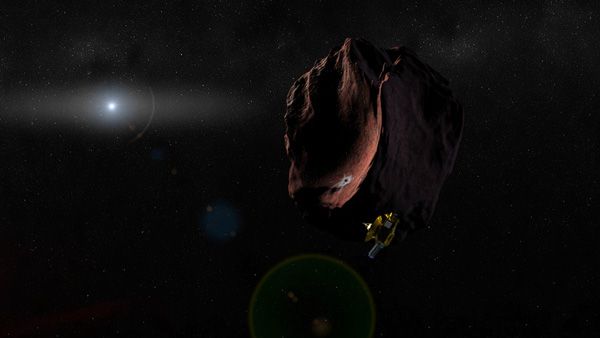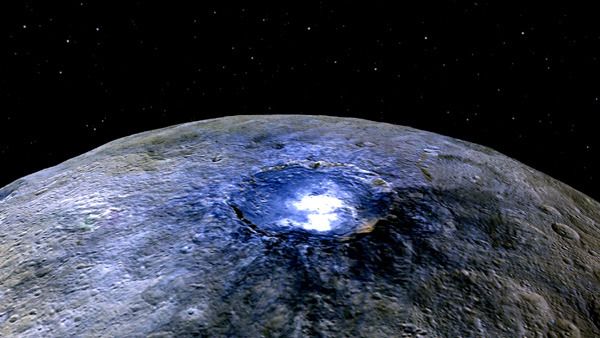
NASA / Johns Hopkins University Applied Physics Laboratory / Southwest Research Institute
New Horizons Receives Mission Extension to Kuiper Belt, Dawn to Remain at Ceres (Press Release)
Following its historic first-ever flyby of Pluto, NASA’s New Horizons mission has received the green light to fly onward to an object deeper in the Kuiper Belt, known as 2014 MU69. The spacecraft’s planned rendezvous with the ancient object – considered one of the early building blocks of the solar system -- is Jan. 1, 2019.
“The New Horizons mission to Pluto exceeded our expectations and even today the data from the spacecraft continue to surprise,” said NASA’s Director of Planetary Science Jim Green. “We’re excited to continue onward into the dark depths of the outer solar system to a science target that wasn’t even discovered when the spacecraft launched.”
Based upon the 2016 Planetary Mission Senior Review Panel report, NASA this week directed nine extended missions to plan for continued operations through fiscal years 2017 and 2018. Final decisions on mission extensions are contingent on the outcome of the annual budget process.
In addition to the extension of the New Horizons mission, NASA determined that the Dawn spacecraft should remain at the dwarf planet Ceres, rather than changing course to the main belt asteroid Adeona.
Green noted that NASA relies on the scientific assessment by the Senior Review Panel in making its decision on which extended mission option to approve. “The long-term monitoring of Ceres, particularly as it gets closer to perihelion – the part of its orbit with the shortest distance to the sun -- has the potential to provide more significant science discoveries than a flyby of Adeona,” he said.
Also receiving NASA approval for mission extensions, contingent on available resources, are: the Mars Reconnaissance Orbiter (MRO), Mars Atmosphere and Volatile EvolutioN (MAVEN), the Opportunity and Curiosity Mars rovers, the Mars Odyssey orbiter, the Lunar Reconnaissance Orbiter (LRO), and NASA’s support for the European Space Agency’s Mars Express mission.
Source: NASA.Gov
****

NASA / JPL - Caltech / UCLA / MPS / DLR / IDA

No comments:
Post a Comment